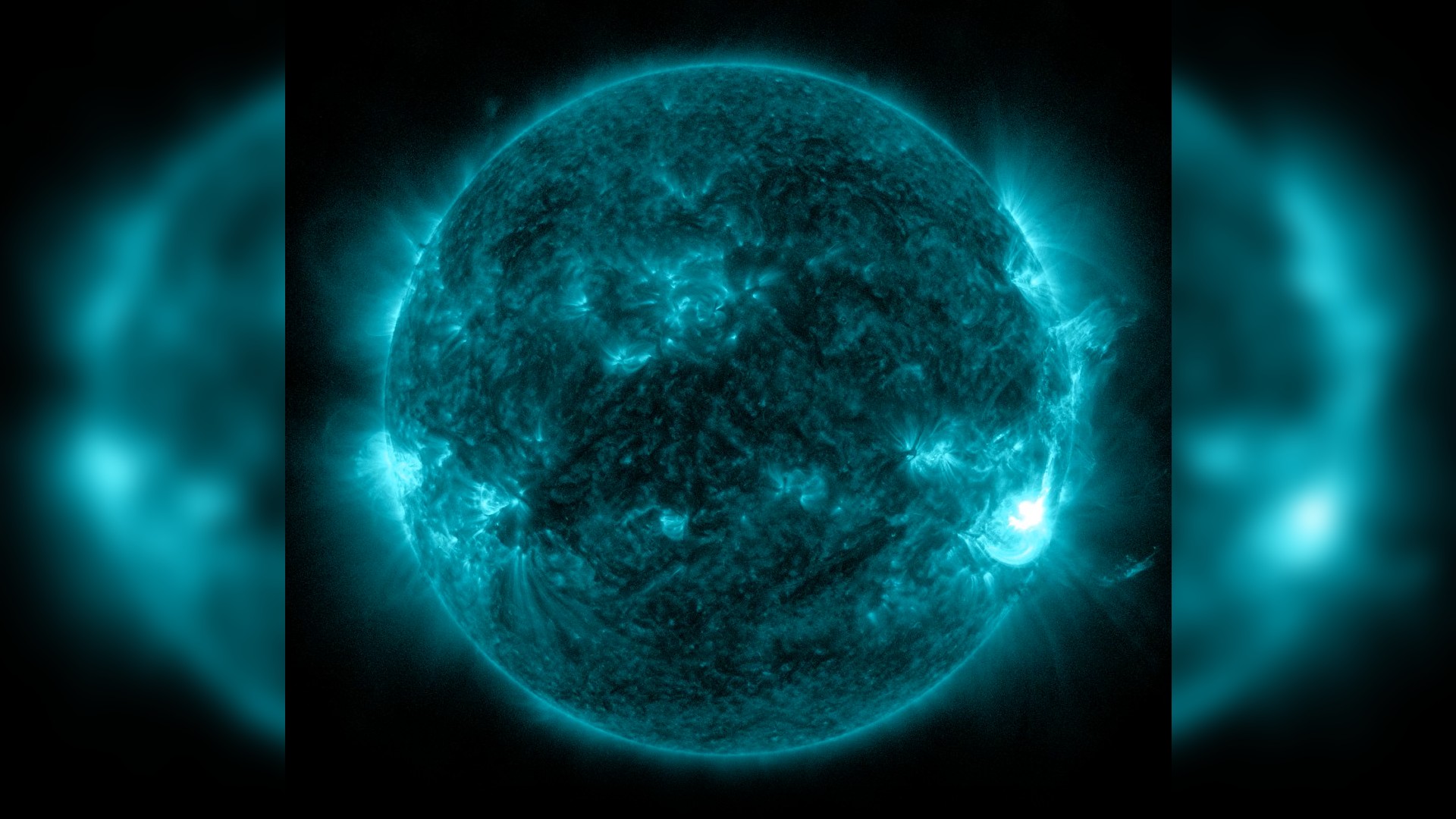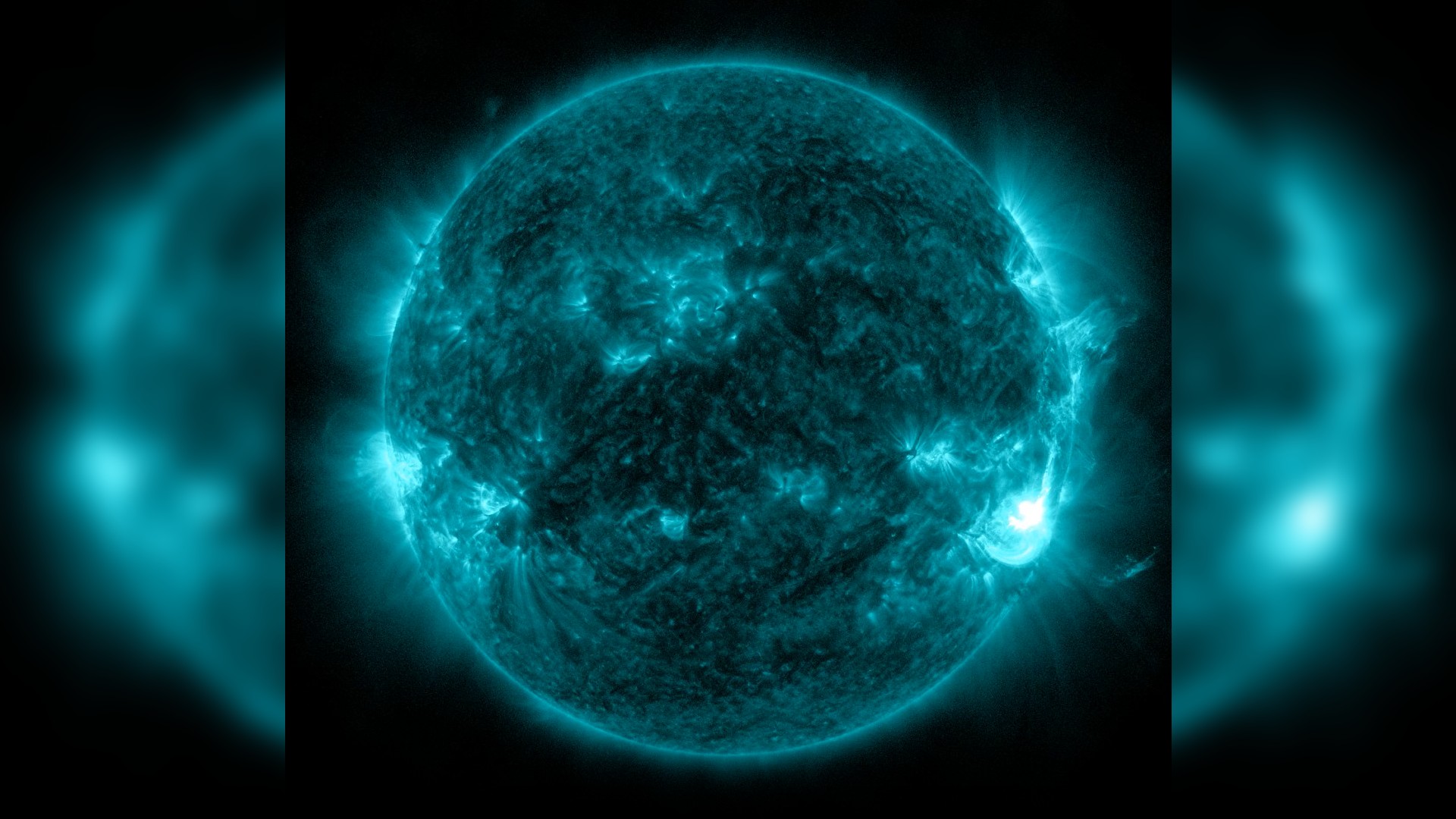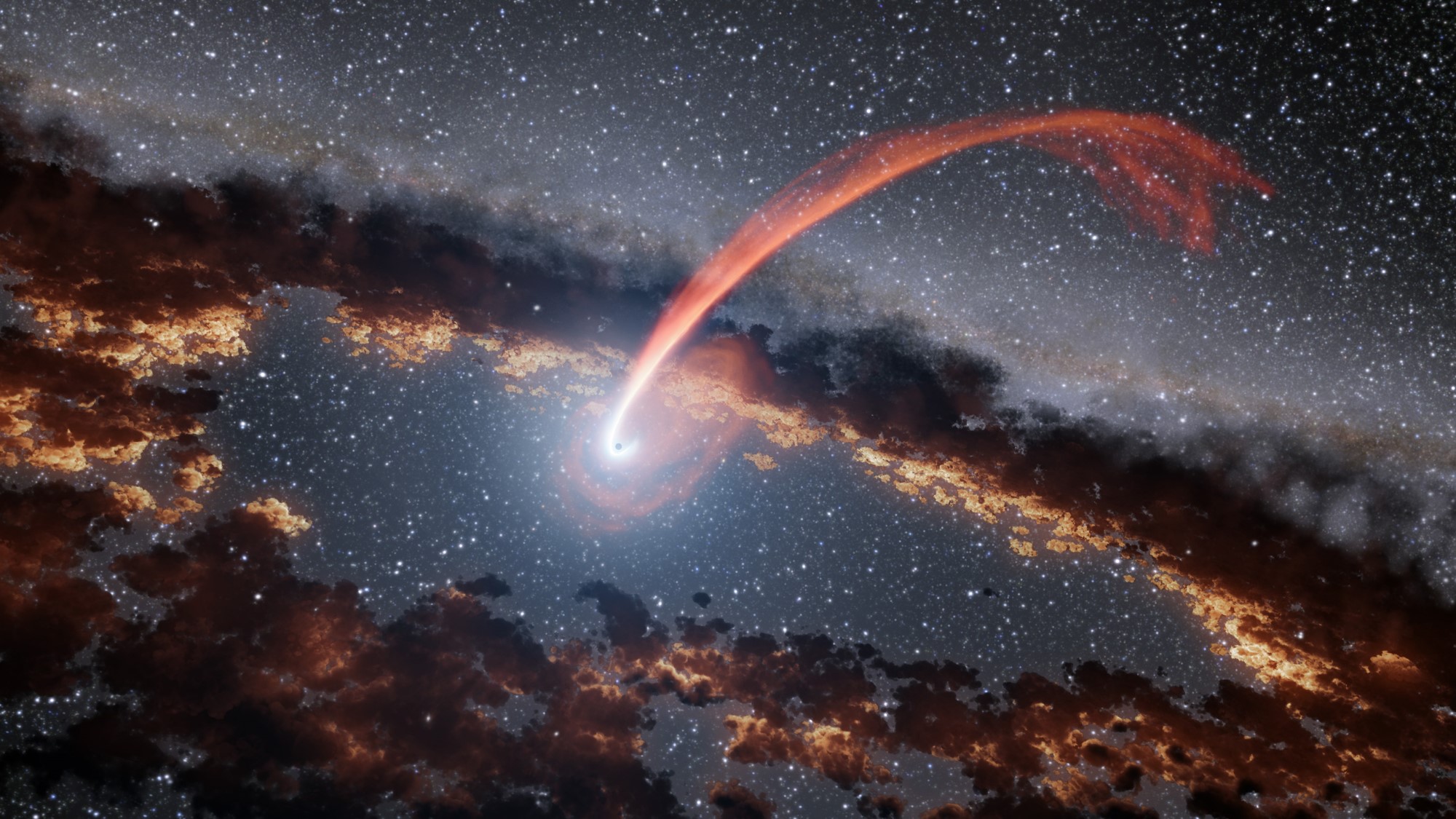It’s the sunspot region that just does not want to quit!
Beastly sunspot AR3697 has made headlines again just before it makes another exit. The sunspot region, formerly known as AR3664, produced the historic geomagnetic storm that led to May’s global auroras.
On Saturday (June 8), the sunspot fired off a M9.7-class solar flare, the second strongest type on the classification scale. The flare was powerful enough that it produced the strongest radiation storm since 2017, according to NOAA’s Space Weather Prediction Center (SWPC). These types of events can pose a risk of impact to space launch operations and satellites, and can also disrupt shortwave radio signals.

Solar flares are intense bursts of electromagnetic radiation that originate from sunspots on our sun’s surface. They are classified into lettered groups (X, M, C, B and A) according to their size, with X-class flares being the most powerful. Within each of these classes, numbers from 1 to 10 (and beyond for X-class flares) denote a flare’s relative strength. That means M-class flares like this one are 10 times weaker than X-class flares but are 10 times stronger than C-class flares.
The strong solar radiation storm on Saturday (June 8th) was the strongest solar radiation or “S” storm since September 2017. pic.twitter.com/NNVvBrLHeKJune 10, 2024
The event was registered as strong (S3) on NOAA’s Space Weather Scale for Solar Radiation Storms, and triggered an enormous radio blackout in the northern polar region.
After Saturday’s blast, fast-moving energetic protons began their journey toward Earth.
Upon arrival, the particles interacted with Earth’s magnetic field and were directed to the poles where they soaked up shortwave radio transmissions. This is known as a polar cap absorption (PCA) event, similar to what occurred in July 2023.
Saturday’s M9.7-class flare also hurled off a coronal mass ejection (CME) which could approach Earth’s outer atmosphere today (June 10) and lead to a geomagnetic storm.
Although not forecast to be anywhere close to its last solar storm show in May, a Geomagnetic Storm Watch remains in place by NOAA’s SWPC for conditions at the G2 level. With the right conditions, the aurora could be possible to see over some northern and upper Midwest States from New York to Idaho Monday night (June 10). You can see the forecast for tonight and the following evening here.
On Monday (June 10), Region 3697 fired off an even stronger solar flare, a X1.5-class at 7:08 a.m. EST (1108 GMT). Parts of Earth’s sunlit side could experience temporary or complete loss of high frequency (HF) radio signals. According to the SWPC forecast, solar activity is expected to be at minor to moderate levels the next few days as Region 3697 rotates out of sight.



